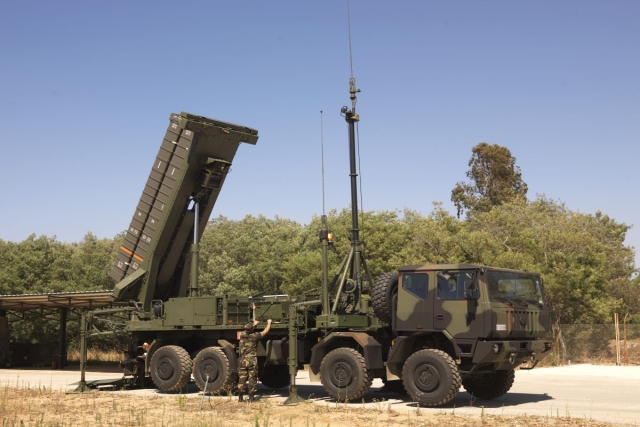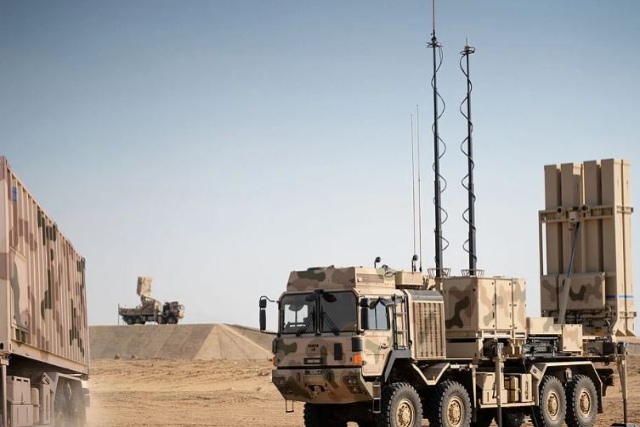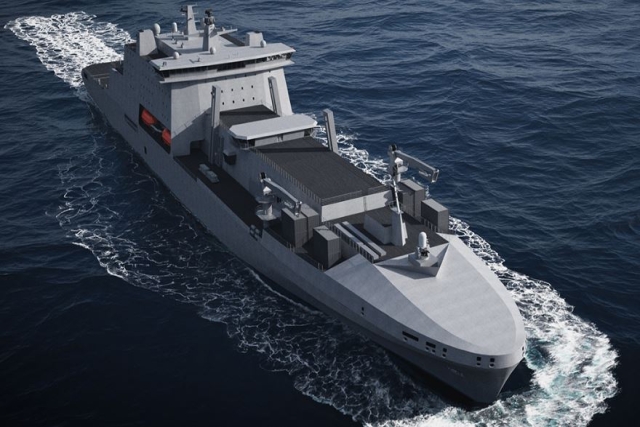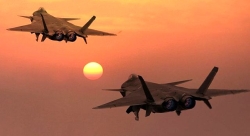Future Assault Rifles To Tag Targets Much Like Social Media Photo Tagging
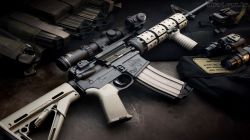
Next-generation military assault rifles will not only be sleeker and faster but will pack in a heavier punch.
These firearms will be developed not only for military snipers and sharpshooters but for the average soldier with need for greater capabilities.
Future rifles will be fitted with sensors, computer powered and will be able to “tag” targets much like tagging a photograph on Facebook to ensure a sure shot. This data can then be relayed or streamed for immediate intelligence sharing.
They will also be lightweight so as to decrease the soldiers load and will be developed for single-hand operations. To reduce the possibility of misfires, next-generation assault rifles will have improved safety to decrease unauthorized discharges.
Manufacturers also intend to develop communication driven rifles. Soldiers will be in a more information-driven combat stage and will be able to pass missed targets to someone else.
Defenseworld.net takes a look at the next-generation assault rifles that are either currently in development or testing.
The ‘Smart Rifle’
The US Army has acquired six precision-guided firearms made by TrackingPoint Inc and has begun testing these so-called smart rifles.
The rifles cost approximately $27,000 per rifle and includes a Linux-powered computer in the scope with sensors that collect imagery and ballistic data such as atmospheric conditions, cant, inclination, even the slight shift of the Earth’s rotation known as the Coriolis effect. Because the computer is wireless-enabled, information can be streamed to a laptop, smart phone or tablet computer for spotting or to share intelligence.
The rifle is used after looking through the scope, the shooter pushes a red button near the trigger to tag a target. A reticle then appears based on the bullet’s expected trajectory determined by the computer. The shooter then arms the scope by squeezing the trigger back, lines up the reticle with the painted target and releases the trigger to fire a round.
The XM8 Rifle
In 2002, the US Army in collaboration with German small arms manufacturer Heckler & Koch began development on a new lightweight assault rifle to replace the aging M16A2 rifles and M4A1 carbines.
The rifle will fire all standard 5.56mm NATO ammunition, and, to further decrease the load on the future infantrymen, a new type of 5.56mm ammunition is now being developed.
This new ammunition will have composite cases, with brass bases and polymer walls, which will reduce weight of the complete ammunition, while maintaining compatibility with all 5.56mm NATOweapons.
The AK-12
Just as the US looks to replace it’s the M-4 carbine, the Russians are developing their own next-generation rifles.
In 2012, Russia began production of the AK-12 which is built on the famed AK-47 assault rifles.
Changes include a 60 round magazine, folding stock, rail system, and a bipod/handguard. Its control mechanism have been ergonomically honed such that single-hand operation is possible. This means an injured soldier can stay in the fight with only one good hand.
The rail system will make the gun compatible with modern firearms accessories, a major upgrade over the older AK models that were not easy to fit with lights, sights, and other additions.
The TsKIB ASH-12
The newly developed Russian bullpup rifle is a dedicated "Close/Urban combat" weapon for high-risk law enforcement operations, which must combine high stopping power with limited penetration and short 'dangerous range', to avoid collateral damage to innocent bystanders or hostages.
Developed by Russia’s TsKIB SOO, a subsidiary of the KBP (Instrument Design Bureau), the rifle is developed for special large-caliber ammunition, loaded with variety of bullets and similar in size, and probably power, to the .50 Beowulf.
The 12.7x55mm assault rifle cartridge is based on the 12.7x55mm subsonic rifle cartridge (similar to the .500 Whisper). TsKIB SOO has developed a FMJ, soft-point, lead and armour piercing loads for the 12.7x55mm assault rifle cartridge.
The Tavor TAR-21
Designed by the Israel Military Industries to replace M-16, CAR-15 and the IMI Galil, the TAR-21 is a gas operated, selective fire, magazine fed assault rifle.
The waterproof and lightweight rifle is design is based on advanced ergonomics and composite materials in order to produce a more comfortable and reliable rifle.
The weapon has a built-in laser and MARS red dot sight, but the TAR-21 can also be mounted with an array of different sights such as a holographic weapon sights, night vision systems and other electronic devices.
The TAR-21 provides carbine length, but rifle muzzle velocity. The bullpup design is also used to minimize the silhouette of soldiers and to maximize effectiveness in turning corners in urban warfare.
The EF-88
The Australian army has enlisted Thales Australia to upgrade their Austeyr F88 to make is more modular, ambidextrous, lighter and easier to accessorize.
New ammunition, an underbarrel 40mm grenade launcher and electronic control system will be developed alongside the rifle. The rifle will be designed for Interoperable Ammunition – designed for optimal performance with new interoperable F1A1 5.56mm ammunition.
It will also have a provision for Electronic Architecture – to allow centralized control and power management of ancillary devices. It will also have an improved Grenade Launcher safety that will reduce the possibility of unauthorized discharge and danger to operator in the event of misfire.

